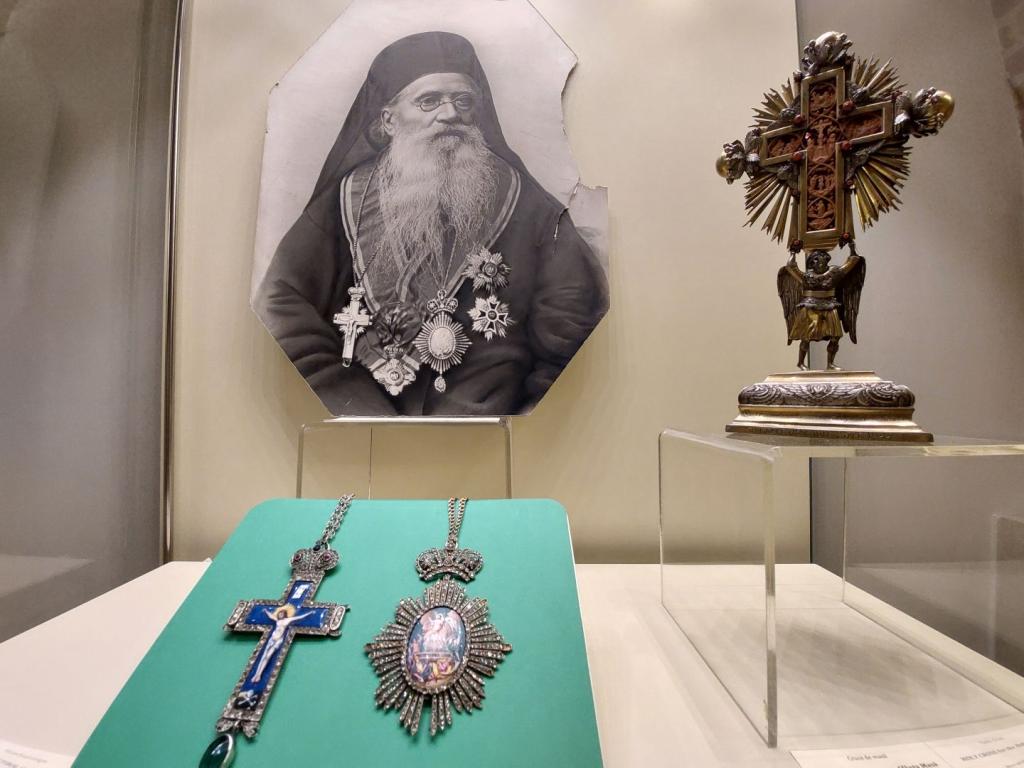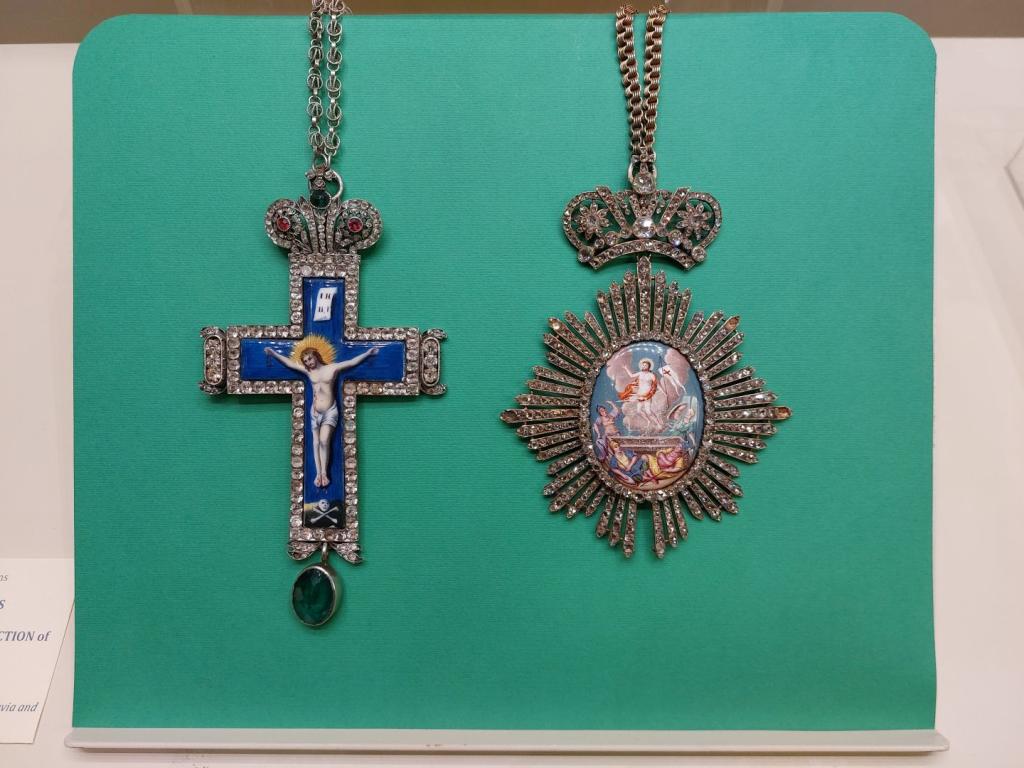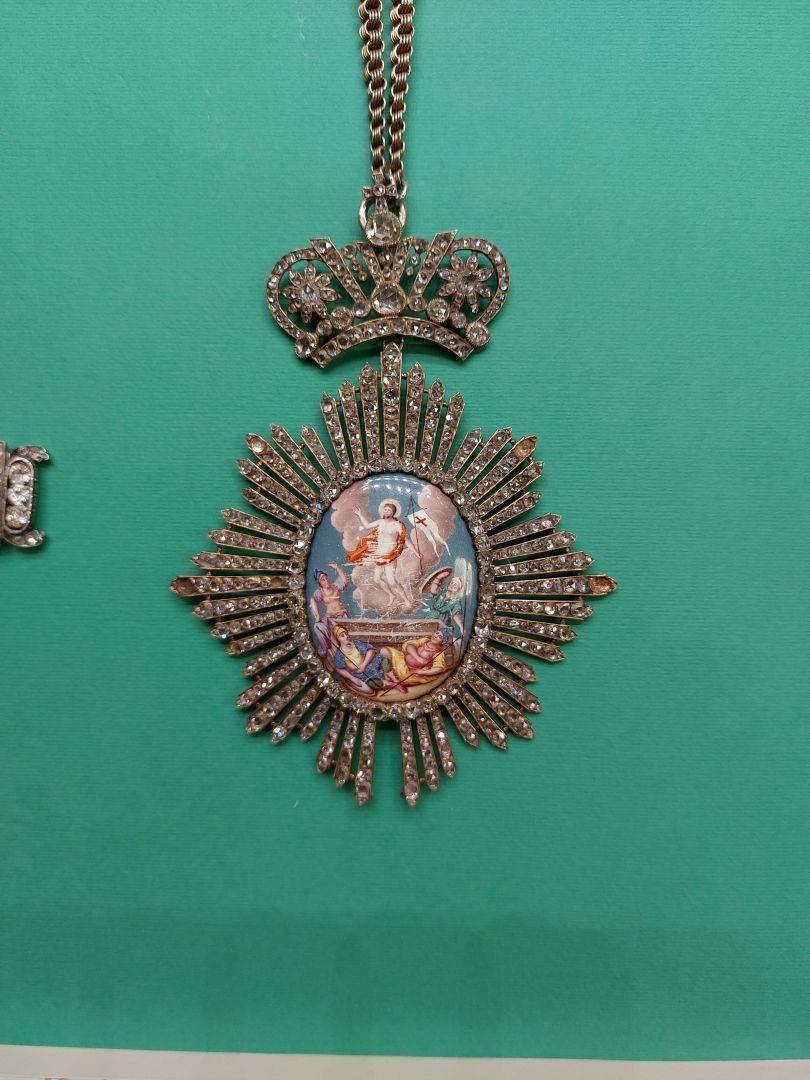
The Metropolitan Museum of Iași, in partnership with the portal doxologia.ro, brings to the public's attention another object selected to be showcased as the exhibit of April 2025: The Reliquary Engolpion "Resurrection of the Lord" of Metropolitan Veniamin Costachi, displayed in the Synaxar Hall, as part of the exhibition "We worship Your Cross, O Lord, and we praise and glorify Your Holy Resurrection," which is currently available for visiting.
The Engolpion consists of an enamel icon-medallion of the Resurrection of the Lord (5 x 3.7 cm), surrounded by a frieze made up of 42 identical diamonds, larger than those placed on the rays. Additionally, the icon shows small scratches caused by prolonged use of the Engolpion.
From the icon radiates ornamental rays made of an alloy of gold and silver, with diamonds of various sizes applied on them. The rays are grouped in sets of seven, in the shape of a cross (left-right-up-down), while five rays are situated between the arms of the cross. At the bottom, one of the rays and its pendant are missing.
In the icon, Jesus Christ is depicted in a mandorla of clouds, with His body partially covered (around His waist and over His left shoulder) with a red garment, victorious above the open tomb, blessing with His right hand raised and holding a white flag with a red cross in His left hand. In front of the tomb, two guards are depicted lying on the ground, while on either side of Christ, two other guards cover their faces from His brilliance.
At the top of the Engolpion, a mitre ornamented with two flowers adorned with diamonds is mounted, made in the same style as those on the rays of the Engolpion, and at the back, the key for the hanging chain is attached, made of gilded silver. At the top of the mitre, a cross with equal arms, with a larger diamond at its base, is visible.
The chain consists of four parallel links. On the back of the Engolpion, there is a small compartment that closes perfectly with a door, where holy relics can be stored.
The Engolpion has the inventory number 27/48, but in an older inventory, it is listed as number 41. From the 1948 inventory register, we find that it was kept in a "gray velvet box," and from the inventory made between 1909-1910, we learn that "at the bottom of the Engolpion hangs a large oval diamond stone, surrounded by thirteen smaller ones and many smaller stones." The 1948 inventory register does not mention this stone, nor that it is missing (as is the case in other situations), but it no longer exists today—so it is impossible to estimate when the stone, together with the ray from the Engolpion, was detached, and unfortunately, we don't know where it is now.
A more detailed research into pectoral crosses and Engolpions led to the publication of the article "Hierarchical Signs – Correspondence Between Representations in Paintings or Photographs and the Items from the Metropolitan Museum Iași's Heritage," which was included in the volume "Testimonies of Romanian History and Culture," edited by the National Museum Cotroceni, in 2022. By studying paintings and photographs of the hierarchs of Moldova in our Museum's archive, we discovered that this Engolpion was first depicted in a youth portrait of Metropolitan Veniamin Costachi (inventory no. 3522). Another interesting aspect is that it is depicted four times, being worn by three Metropolitans. Besides the already mentioned portrait, this Engolpion was identified in a painting and a 1900 photograph of Saint Hierarch Joseph the Merciful (currently displayed together with the Engolpion) and also appears in a photograph of Metropolitan Pimen Georgescu. Each time, the Engolpion is represented with a pectoral cross (inv. 18/48), which is similar in decoration (mitres, rays, and the diamond medallion at the bottom).
Therefore, we invite you to visit the Metropolitan Museum to see this highly valuable object, as well as to discover many other relics preserved through the ages by the Metropolitanate of Moldova and Bukovina.
Mihai-Alex Olteanu





